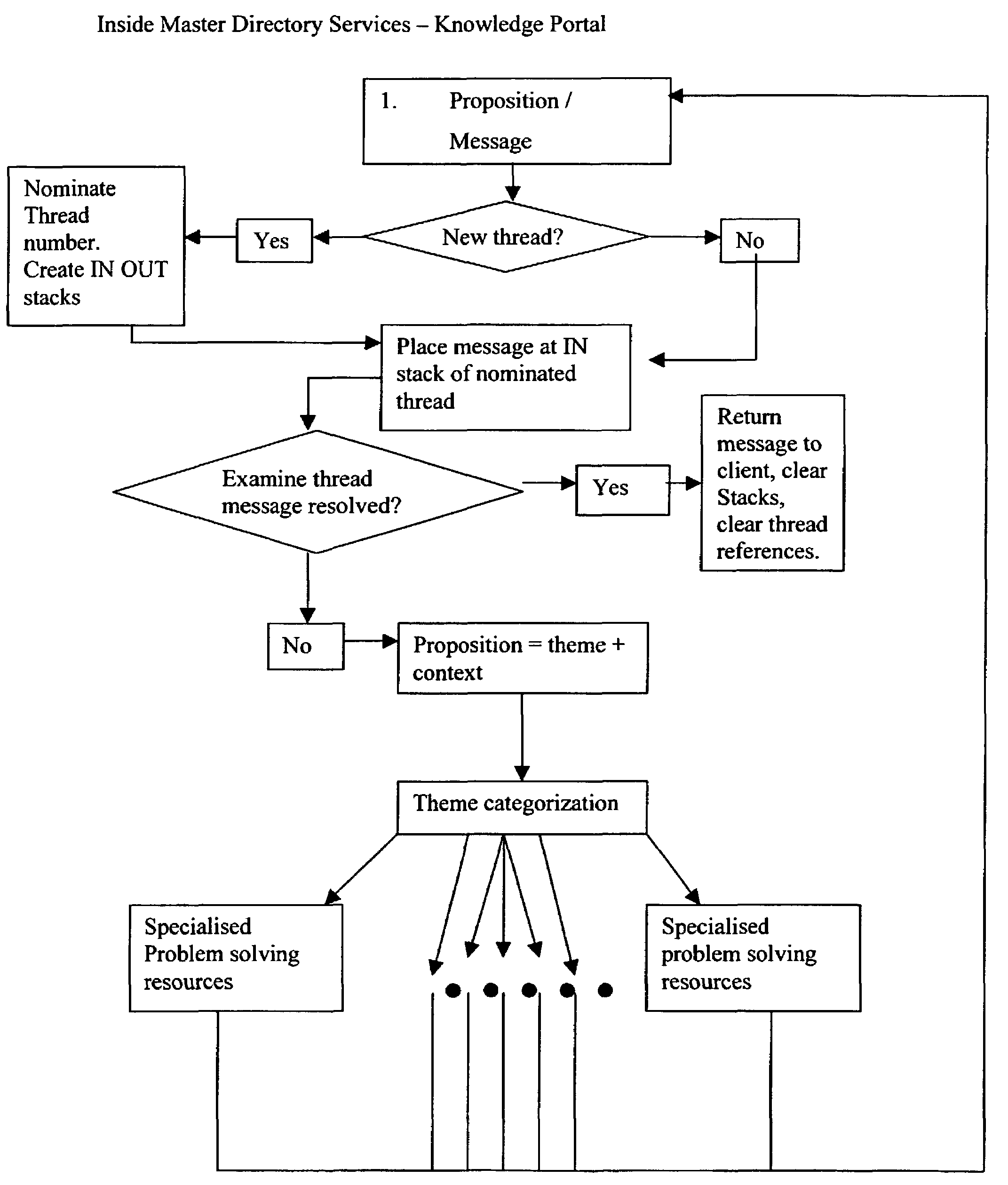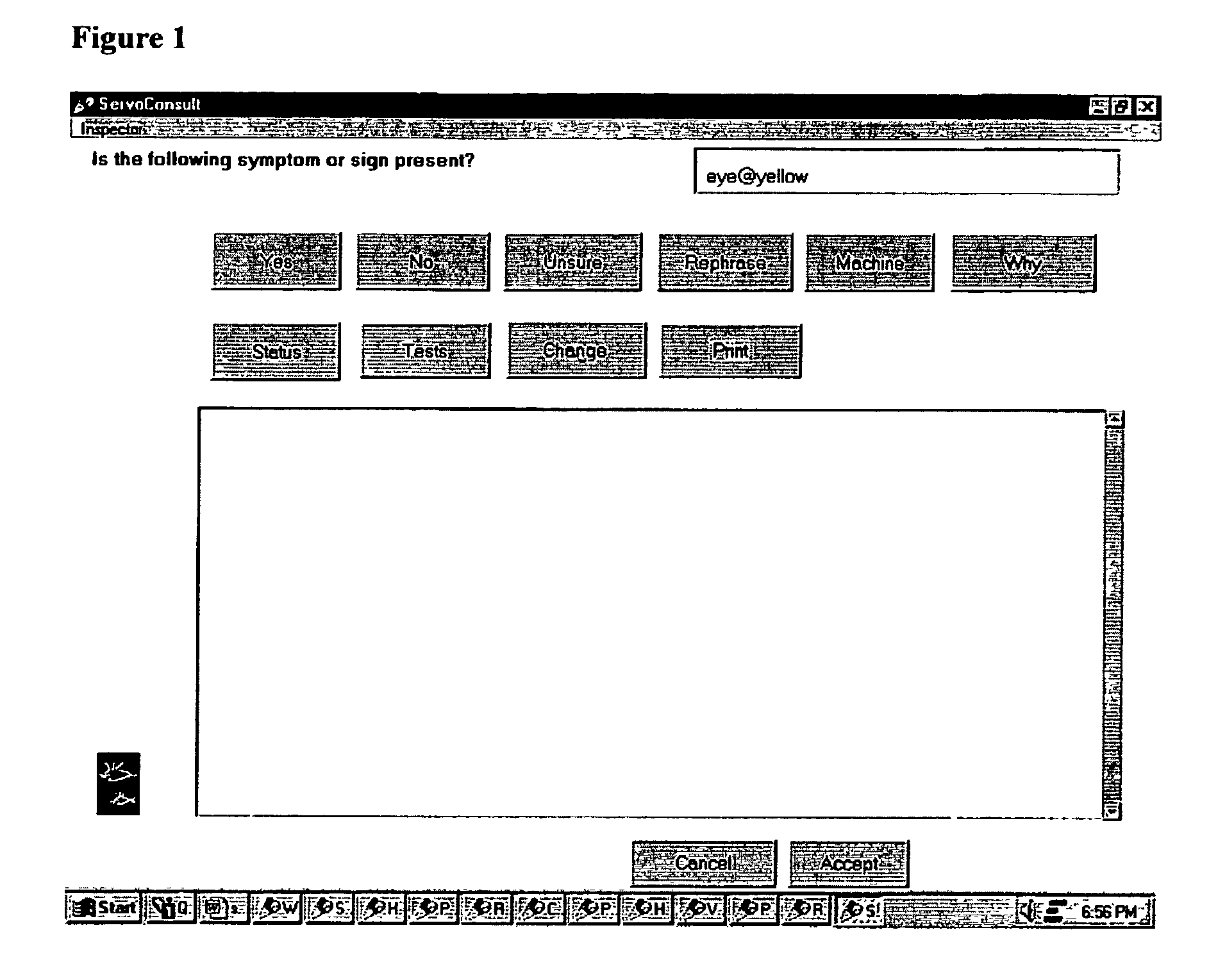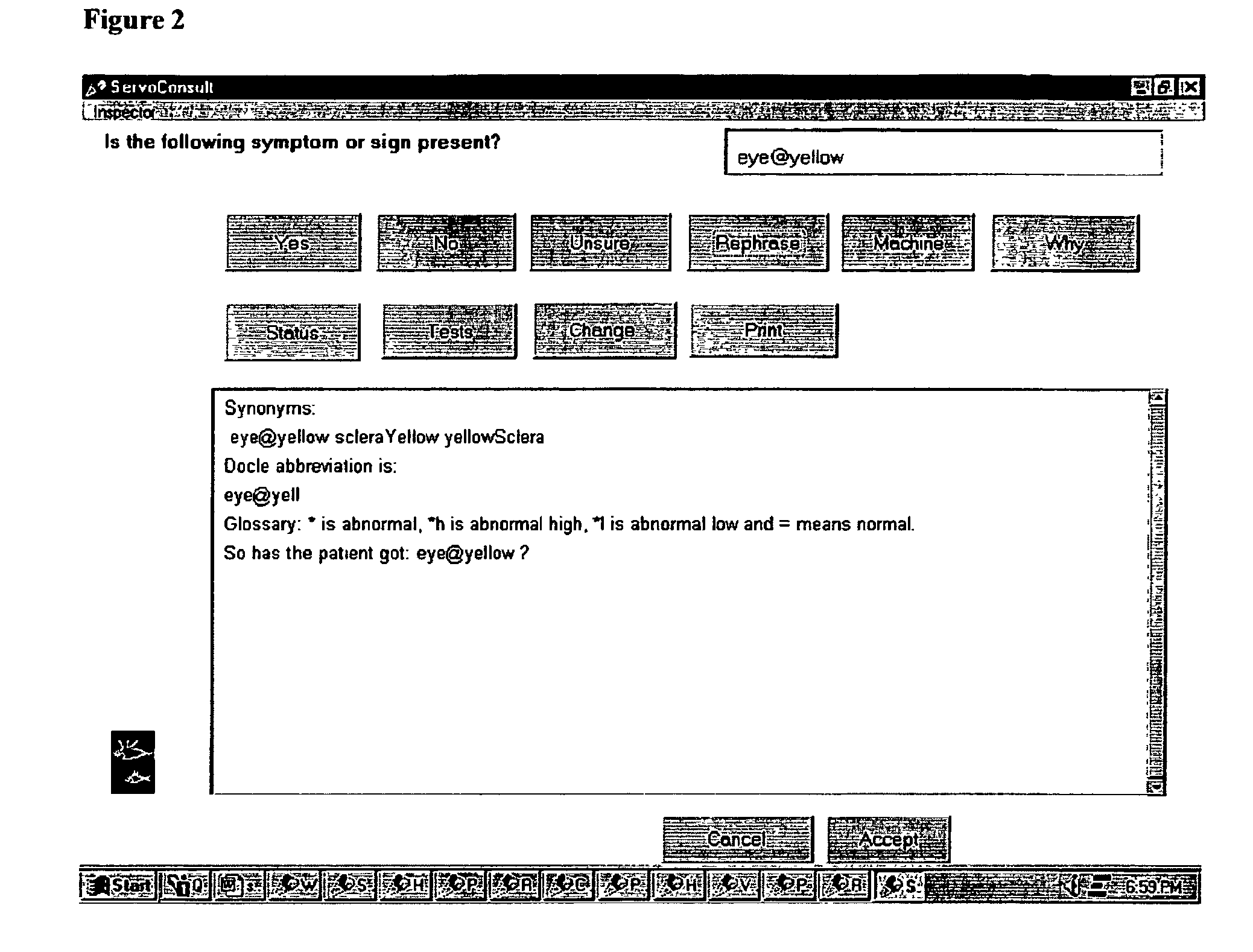In the past it has been difficult for providers of knowledge based services, such as healthcare professionals to increase their productivity in terms of clients (or patients) seen per day.
An effective and competent health professional easily builds up a large practice and with constant referrals from within and outside the health care network, may soon be overwhelmed with patient numbers.
This limits the time available for solving the problems of the individual patient and hence translates into a deterioration of health care for each of the individual patients once the healthcare professional exceeds his or her limit of patient numbers.
In addition, the potential income of a healthcare professional is presently limited by the time available to spend with each patient.
Therefore, despite the arduous acquisition of expert knowledge and skills, the potential income of healthcare professionals is at a relative
disadvantage compared with other professions such as in the legal, accounting or architectural professions.
This problem is particularly acute for the successful healthcare professional who attracts a large following of patients.
Hitherto it has been difficult to increase patient
throughput.
To analyse each of these problems properly takes precious time and skill.
The current healthcare professional consultation model (and in particular that utilised by doctors) is flawed by the
limited capacity of the
human brain to track and evaluate the multitude of complex patient events.
The problem is the apparent need to spend time with the patient during the period in which they are seeking healthcare advice.
As the healthcare professional can only be in one place at one time, this is an apparently insurmountable lack of time (or ‘time trap’).
From the patient's viewpoint, it is considerably inconvenient that he or she cannot obtain a consultation, attuned to their current health context, at any time or place.
(a) The problem of entering patient historical notes into computerized medical packages;
In addition, this triangular process (which involves the computer, the patient and the doctor) will materially affect the quality of the medical thinking and decrease the value of the
consultation process.
For example, it has been found that a doctor's concentration on the computer screen rather than the patient can inhibit free communication and make the doctor appear more concerned about taking correct notes than about the patient.
Often these symptoms are difficult and tedious to analyse, and may consume large amounts of expensive and valuable time.When under pressure due to large numbers of patients, healthcare professionals tend to succumb to mental laziness, and employ simplistic thinking.
This often leads to the ordering of more diagnostic tests which may be unnecessary or even inappropriate.
(c) The duty of care owed to the patient;With the increasing complexity of
medical care it is getting harder for the healthcare professional, especially the
primary care physician or general practitioner to take good care of their patients.
However such a large amount of information has been found to confound the doctor's analysis.
In addition, they do not solve the problem of the healthcare professional having to note down the
medical history.
This can be problematic since such internet searches typically return tens of thousands of web documents.
The poor efficiency of present systems is compounded by the
namespace problem in the knowledge domain.
Maintenance is a gargantuan task and inevitably the complexity leads to collapse of the
system.
Such call by reference coding systems (such as ICD, ICPC, Read and Snomed) have been found to have a likelihood of an adverse outcome for patients or a component of the health
system.
Previously used reference codes such as Read or Snomed which are modeled on the numeric paradigm appear unable to adequately deal with the problems faced by e-
medicine.
A further problem with present medical coding systems is their inability to
handle fine detail or ‘
fine grain information’.
Present systems, such as the V codes in ICD 10 often lead to a loss of coded information due to loss of context (for example, there are only 3356 V codes with which to cover all types of injuries.)
A further
disadvantage of the V codes is that it has a limited range of discriminants or context modifiers (for example, for injuries).
From this it can be seen that there is a gross mismatch between the contextual situations that the user wants to code and the codes allowed for by the V series design.
A still further problem with the V code system is that due to the mismatch between the number of codes and the combinations possible with the discriminants, coded information must be retrieved via a
lookup table and not by inspection of the ICD codes themselves.
A further problem with the numeric reference code schema is the imprecision and difficulty of coding at the source.
This makes coding very prone to error.
There are also issues as to the proper maintenance of numerical based codes.
To make the new framework backward compatible is a
nightmare.
To code for all various possible types and causes of sporting injuries using the ICD paradigm would be an enormous task.
The explosion of codes that was seen in the READ coding system, which reached 400,000—would have maintenance a very difficult task.
An ICD code once applied creates a situation whereby it is hard to retrieve, or analyse a particular subcomponent of a code.
Since the ICD code (and other similar numeric codes) itself does not have a fixed
alphanumeric pattern mapped to an external reality, searching for subcomponents is possible but excruciatingly difficult.
Traditional, numerical based systems are limited as to the level of complexity of events described.
The colour of the vehicle may play a role in serious car accidents and may come up for serious contemplation.
In that sense the current ICD scheme is not sensitive or expressive enough to code for a comprehensive picture that is required by the researchers.
Associated with the problem of coding for medical entities (or any entity in any knowledge domain) there is the problem of converting handbooks and textbooks guidelines into fully
fledge computerized decision support, offering answers at the point of
clinical decision making.
Coding the above with a numeric coding system is a challenge.
 Login to View More
Login to View More  Login to View More
Login to View More 


